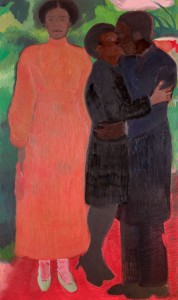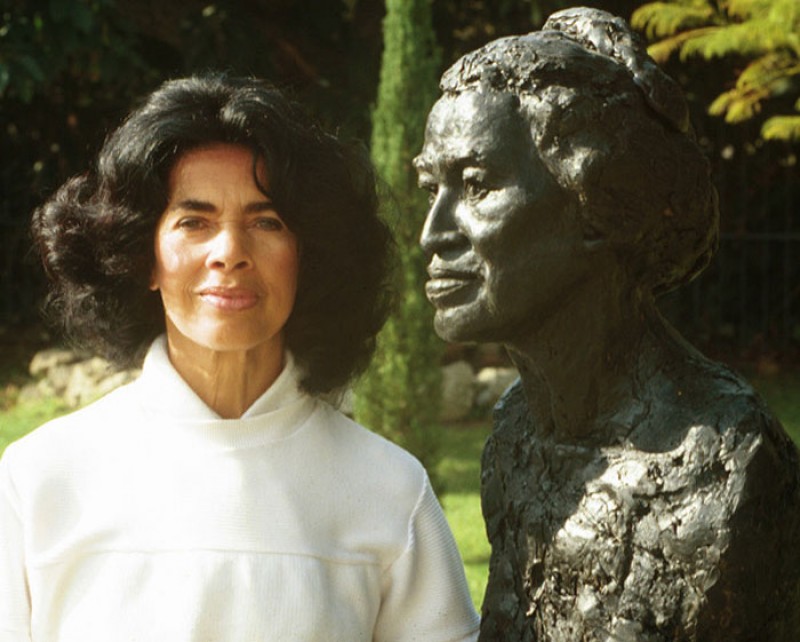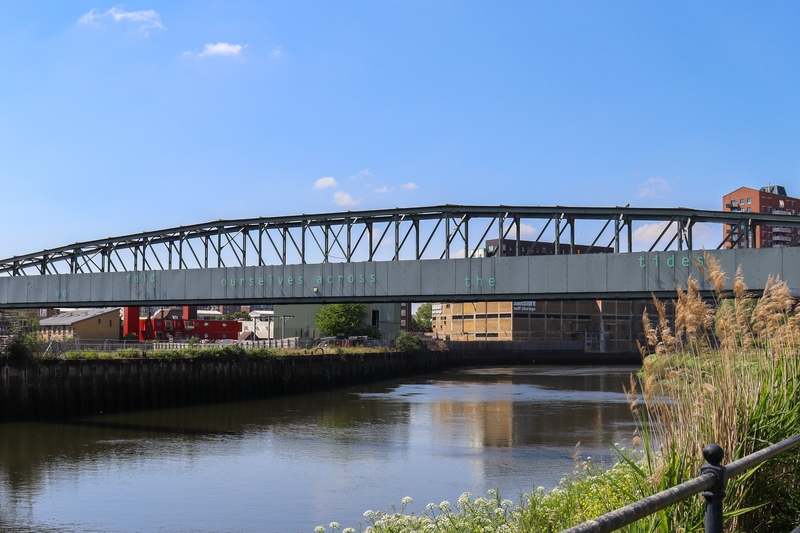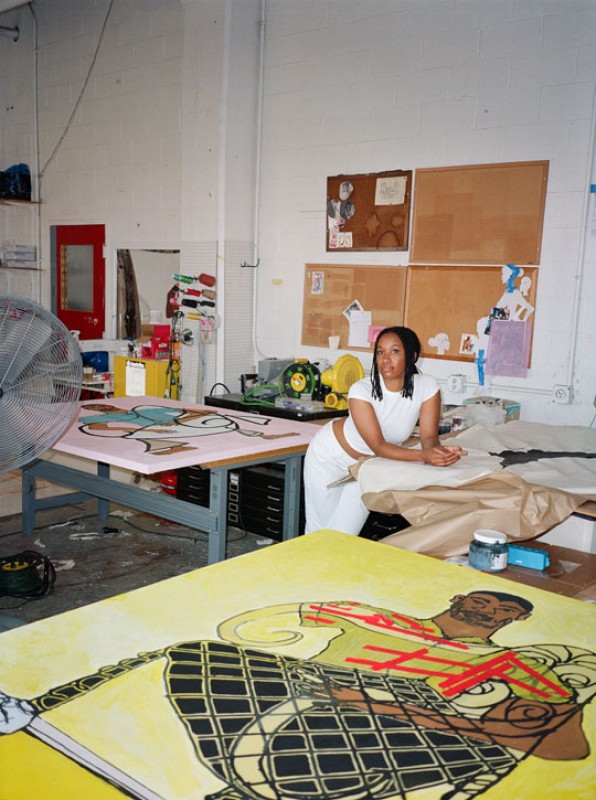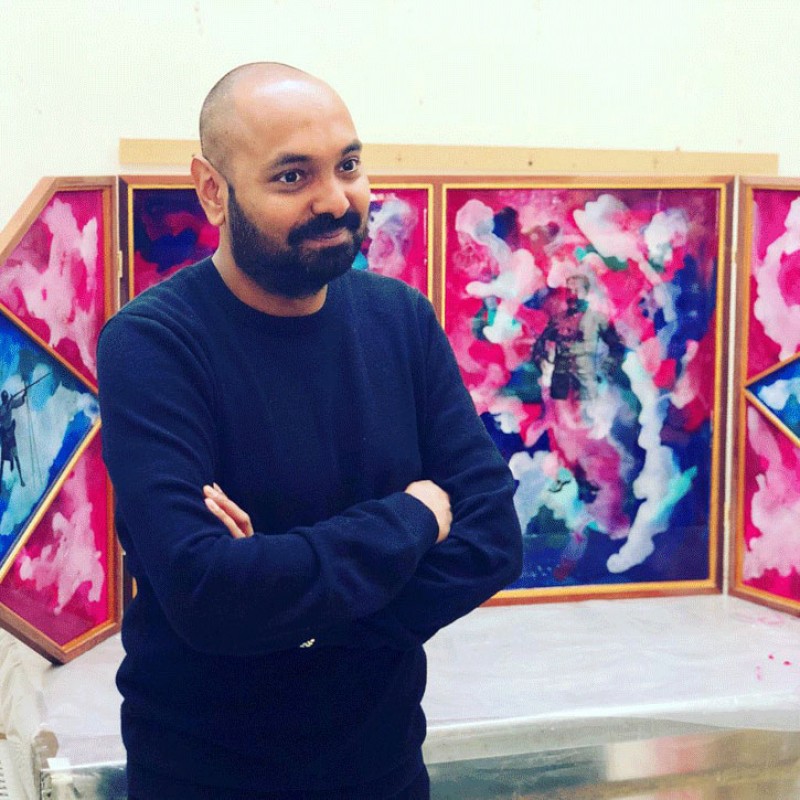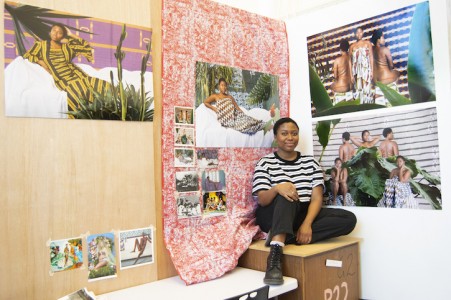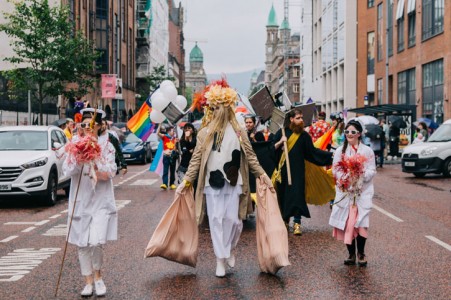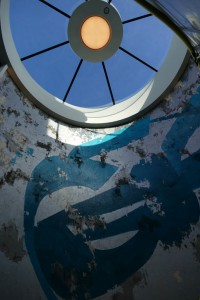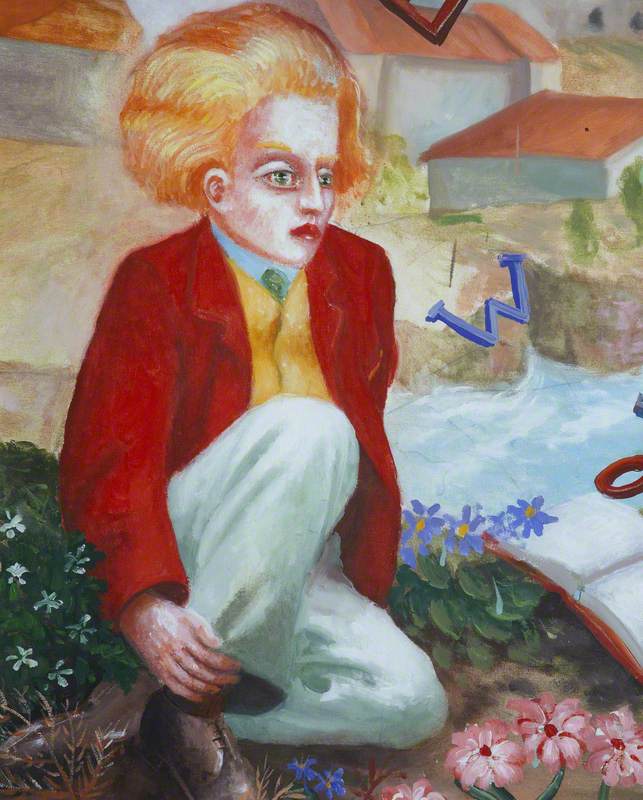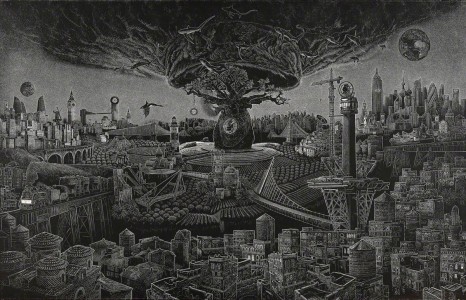In the series 'Seven questions with...' Art UK speaks to some of the most exciting emerging and established artists working today.
Ade Adesina is a printmaker who pushes the discipline to its limits, creating monumental, large-scale works that explore complex subjects including ecological change, global conflict and human displacement.
Conditional Love
2019, linocut by Ade Adesina (b.1980) 
Originally from Nigeria, Ade moved to London to study painting and began printmaking when he moved to Aberdeen. He was elected as a Royal Scottish Academician in 2017, just five years after graduating from Gray's School of Art. He still lives in the city, and now works in his studio at Wasps as well as at Peacock Visual Arts.
His practice combines traditional techniques with innovative technology, and also encompasses painting, sculpture and installation. He has worked collaboratively with artists including David Mach, Lennox Dunbar and Florence Poirier Nkpa, and has been artist-in-residence at Eton College and Glasgow Print Studio.
Ade Adesina in his studio in Aberdeen
Rhona Taylor, Art UK: The past couple of years have been difficult for printmakers and other artists who need to use workshop facilities. How has that impacted your work?
Ade Adesina: I like having a deadline – something to keep me motivated and keep me going. So not having a deadline and not knowing when the next exhibition was going to be made it tricky. The energy was not the same.
While the workshop was shut, I was experimenting with other stuff. I've been trying to get colours into my work, so I was experimenting with that, and trying to find a new way of making work. And trying to come up with ideas – just using that quiet time to try to find something out, even though I don't know exactly what it is.
Rhona: Your works are very complex in their imagery, language and subject matter. Could you tell me about the process of making them?
Ade: I usually have a starting point – maybe that's a subject, or an object that's connected to a story. I work like I'm writing, in a way, with different characters coming in and everyone playing their part in making the story come to life.
So for example my print The View After the Questions – that is just about how everything in the world is connected and how everything affects everything else around the world. That can be politics, religion, energy consumption or climate change – it can be war or it can be migrant crises. And I'm trying to tell those stories in a different way.
The View After The Questions
2018, linocut print by Ade Adesina (b.1980) 
That print was inspired by my travels around the world. I first started thinking about this idea when I visited Trujillo in Spain – the view from the castle on top of the town holds so much history, reflecting wealth and poverty but also a very strong culture.
When I was on the bus from Madrid to Trujillo, I noticed how every few miles there was a castle. I was told that during a gold rush in America, a lot of families migrated there. After making so much wealth, they returned and tried to outbuild each other. I started thinking about how the wealth made abroad can totally transform a landscape in another part of the world. I was so fascinated by this connection and couldn't wait to get back to the studio with all the images and sketches.
The View After The Questions is a commentary about global connection. I tried to address the interconnection between economics, environment, development, and survival of endangered species. I took the images I collected while I was travelling, and collaged them with images from the old historical buildings of Yemen. Most of the Yemeni buildings have been affected by war, which has been going on for years. My thinking at the time was to keep those buildings alive.
Soul
2019, etching & aquatint by Ade Adesina (b.1980) 
Rhona: Your work clearly draws those connections between places – has the fact that you have lived in such different places also influenced your work?
Ade: I lived in Nigeria, then London, and now I'm in Scotland – those are different places with different experiences and different people, and that all adds to the story of your life.
I personally feel as an artist, that you are what you make. Your influence is the things you see or have experienced in the past, or things you're interested in, and that's what you make. You don't make things that aren't really connected to you.
Whether it's the landscape, your village or town, or maybe wildlife, we all get inspiration from somewhere. And I think that my own journey feeds into my work as well.
Déjà vu
2021, linocut by Ade Adesina (b.1980) 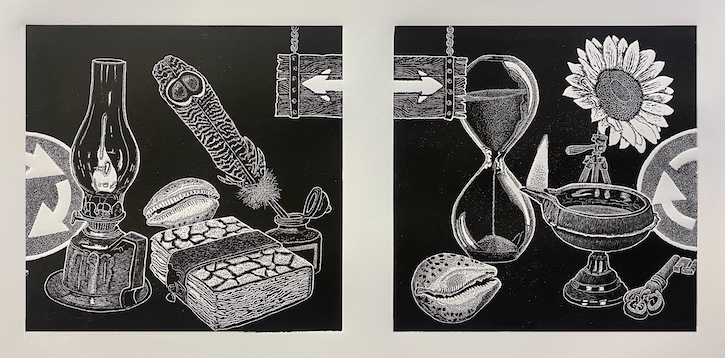
Rhona: Tell me about Déjà vu, the print you made for the Art UK print sale.
Ade: That was about playing with time in the current situation. If you put maybe three people together and just have a conversation about current affairs, then you find out that everyone's got a different opinion about what's going on. Everyone's got their opinion about climate change, and everyone's got an opinion about the pandemic or the vaccine.
So I was playing around with it – you can see in the print there's a couple of lamps, there's cowries, a flower, a couple of signs – there's confusion. At the end of the day, we are all talking about the same thing, but we go round and round. This is almost like a metaphor.
Ade Adesina editioning a print in the workshop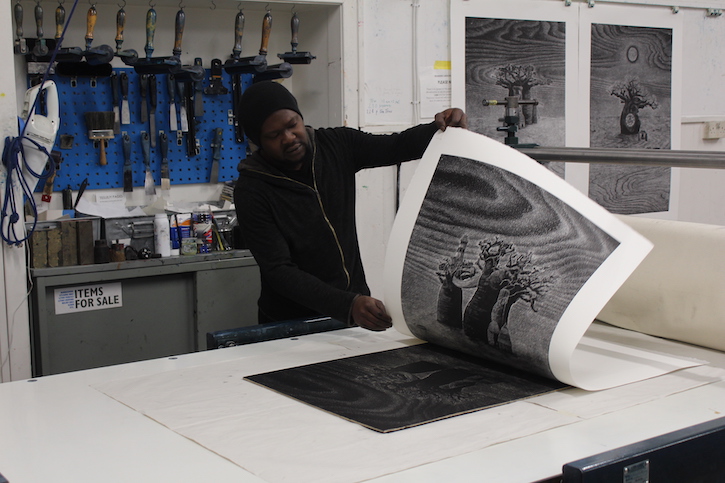
Rhona: As well as printmaking, you also paint and make three-dimensional work. How does printmaking relate to the rest of your practice?
Ade: When I was a boy in Nigeria, I did a workshop in three-dimensional wood carving at the Cultural Centre in my city, Ibadan. I went during the school holidays or the weekend, but my parents saw I was getting distracted from school because I enjoyed it so much.
I've always been painting since I can remember, even as a young child, everyone would be playing football, but I'd just be drawing or painting.
Parallel
2020, linocut by Ade Adesina (b.1980) 
I actually came to Scotland to study painting, but after walking into the printmaking workshop and seeing all the facilities and the presses – I was really impressed, and knew there was more to printmaking. There's a lot to learn – from screenprinting to lithography to collagraphs and relief printing. So that was why I chose to do printmaking. I really enjoy it, because what you can achieve in printmaking is endless.
Rhona: Printmaking is often seen as a very traditional art form. How do you think it sits within the wider context of contemporary art?
Ade: It would be great if we could keep a lot of the tradition of printmaking alive, but as time changes, technology changes, and the way we are working changes, so I think it's important to embrace more modern technologies as well.
Ade Adesina working on a print in his studio
I remember when I used to use a Dremel (an engraving tool). I could see people's reactions to me using it, like, maybe it's kind of cheating. But now I see more and more people embracing the new technologies that we have access to.
And I also look at it this way – I'm inspired by Salvador Dalí's work. Just imagine if he was still alive, and had access to Photoshop. I mean just imagine what Dalí would have done with that.
Another Life
2019, linocut by Ade Adesina (b.1980) 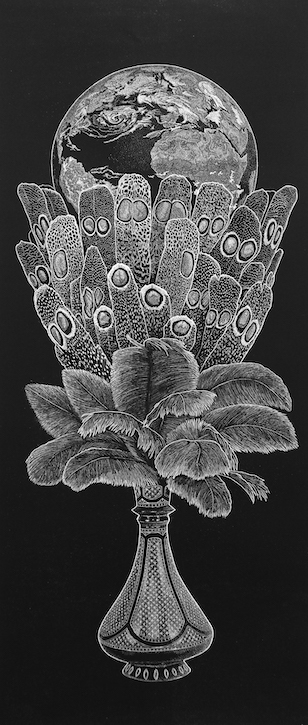
Rhona: You've worked collaboratively with a lot of other artists. What does that bring to your practice?
Ade: That's been a great experience. Every artist is different, and every project is different. I love the challenge of it – if you work with a painter, they don't necessarily know how linocut or other printmaking works. So I have to try to bring the idea to life.
I've worked with so many amazing people, and I would say that every experience is an experience. So even if it didn't go smoothly, I still believe I've learned something that can be used in the future.
My goal is always to have a memorable outcome and make something that would never exist without those two people coming together.
Rhona Taylor, Commissioning Editor (Scotland) at Art UK





